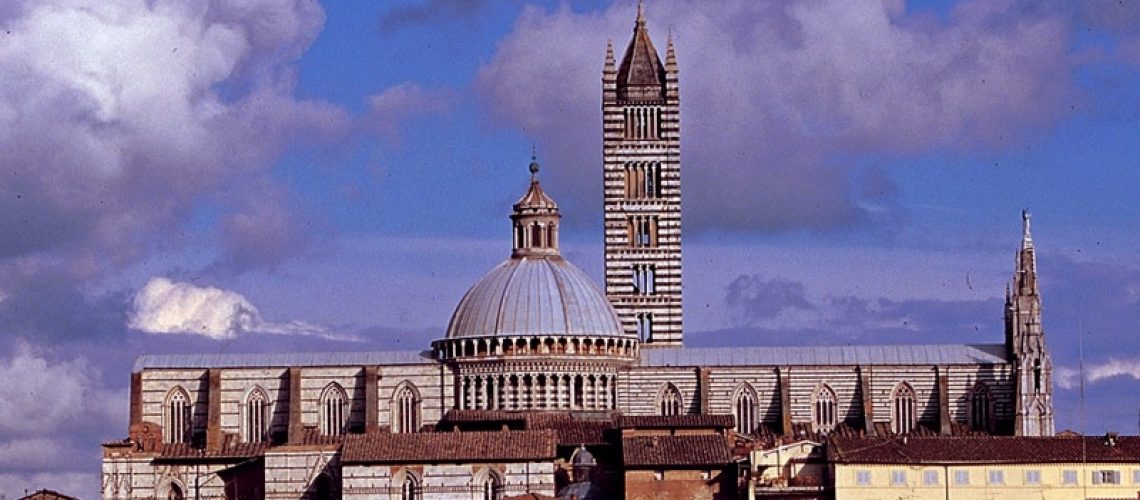As it often happens in Italy, a museum is not only packed to the rafters with masterpieces, but it is a masterpiece by itself. The Siena Pinacoteca Nazionale is no exception!
The Pinacoteca Nazionale di Siena is one of the most important national museum of the city.
The museum site was originally a pair of separate buildings – Palazzi – in Via San Pietro (just 0.5km / 0.3mi from Piazza del Campo): the Palazzo Pannocchieschi – Brigidi (XIV Century) and the Palazzo Bichi – Buonsignori (XV Century).
In the XIX Century the Palazzo Bichi – Buonsignori Façade has been redesigned according to the neo – medieval style, to match the Palazzo Pubblico (town hall, the main Piazza del Campo palace).
The Pinacoteca is – of course! – the most important museum in Italy about the Sienese Middle Ages and Renaissance art, with works spanning from the XIV to the XVII Century.
Moreover, the Spannocchi – Piccolomini collection, donated to the city of Siena by the Spannocchi – Piccolomini family in 1835, comprehends Flemish, Dutch and German paintings, such as a Saint Jerome by Albrecht Dürer and a masterpiece by the Venetian painter Lorenzo Lotto: a Nativity.
But going back to the Sienese Art, some of the main works are from Duccio di Buoninsegna, Guido da Siena, Simone Martini, Ambrogio Lorenzetti, Il Sodoma and Domenico Beccafumi.
Duccio’s Madonna Of The Franciscans (1300) is a beautiful example of Proto – Renaissance Sienese art.
The Blessed Agostino Novello Altarpiece by Simone Martini (1324) is a work that will let you feel all the warmth and richness of the Medieval art.
The St. Michael Expelling the Rebel Angels by Beccafumi, around 1528, is a completely different work, with an attention for chiaroscuro which somehow anticipates the Caravaggio’s light.
The Pinacoteca is not only paintings: statues and reliquaries ice the top, along with the Galognano’s treasure, a hoard of beautiful barbarian everyday objects, and temporary exhibitions.

